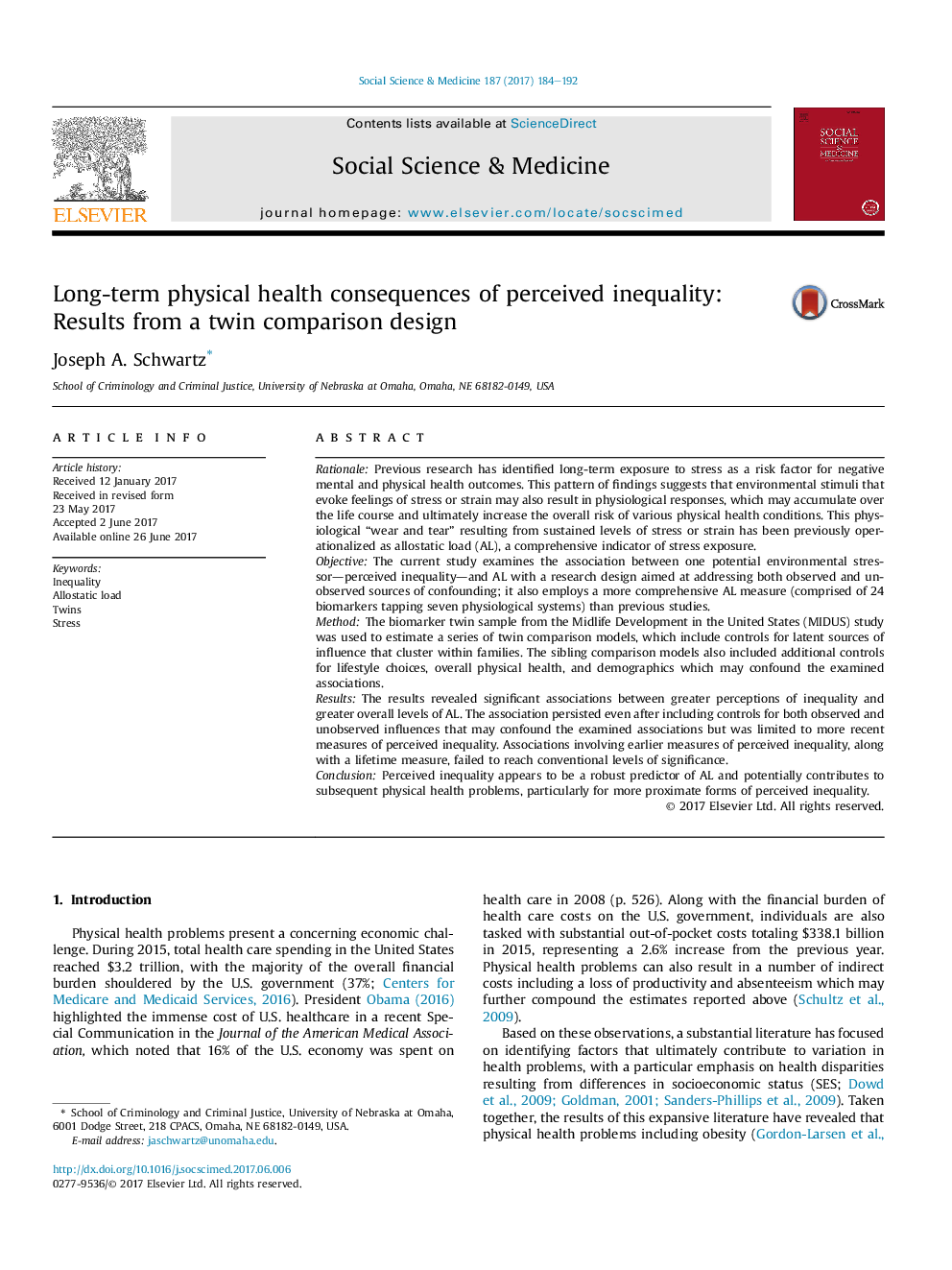| کد مقاله | کد نشریه | سال انتشار | مقاله انگلیسی | نسخه تمام متن |
|---|---|---|---|---|
| 5046474 | 1475982 | 2017 | 9 صفحه PDF | دانلود رایگان |
- Social inequality is associated with negative physical health outcomes.
- Social stressors can accumulate and increase allostatic load (AL) over time.
- AL was positively linked with perceived inequality.
- Findings persisted after estimating within-family effects using twin comparison models.
RationalePrevious research has identified long-term exposure to stress as a risk factor for negative mental and physical health outcomes. This pattern of findings suggests that environmental stimuli that evoke feelings of stress or strain may also result in physiological responses, which may accumulate over the life course and ultimately increase the overall risk of various physical health conditions. This physiological “wear and tear” resulting from sustained levels of stress or strain has been previously operationalized as allostatic load (AL), a comprehensive indicator of stress exposure.ObjectiveThe current study examines the association between one potential environmental stressor-perceived inequality-and AL with a research design aimed at addressing both observed and unobserved sources of confounding; it also employs a more comprehensive AL measure (comprised of 24 biomarkers tapping seven physiological systems) than previous studies.MethodThe biomarker twin sample from the Midlife Development in the United States (MIDUS) study was used to estimate a series of twin comparison models, which include controls for latent sources of influence that cluster within families. The sibling comparison models also included additional controls for lifestyle choices, overall physical health, and demographics which may confound the examined associations.ResultsThe results revealed significant associations between greater perceptions of inequality and greater overall levels of AL. The association persisted even after including controls for both observed and unobserved influences that may confound the examined associations but was limited to more recent measures of perceived inequality. Associations involving earlier measures of perceived inequality, along with a lifetime measure, failed to reach conventional levels of significance.ConclusionPerceived inequality appears to be a robust predictor of AL and potentially contributes to subsequent physical health problems, particularly for more proximate forms of perceived inequality.
Journal: Social Science & Medicine - Volume 187, August 2017, Pages 184-192
